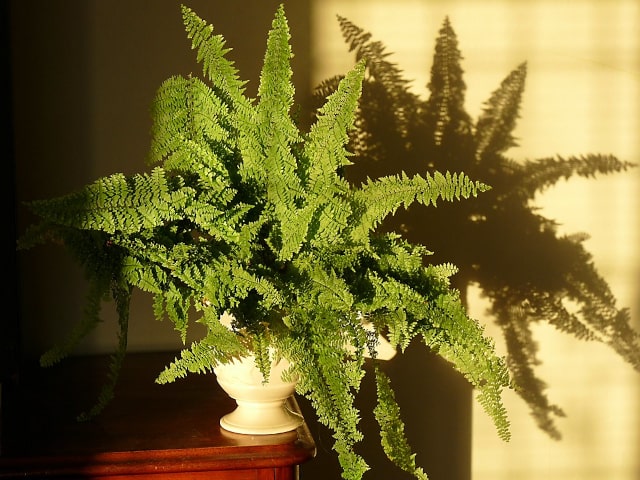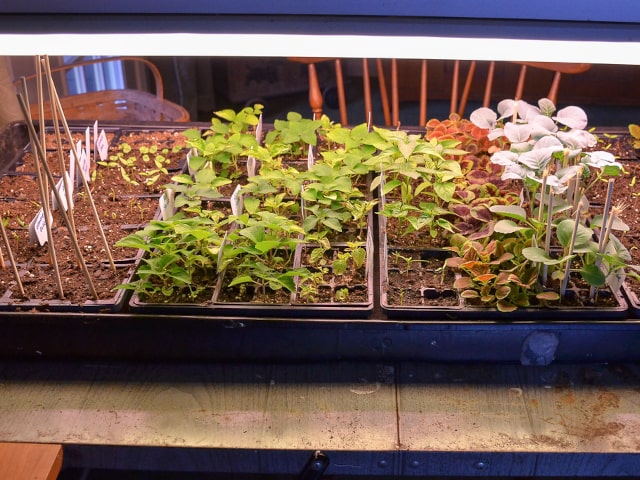
The Rhapis palm (Rhapis excelsa) is an interesting plant that can be kept indoors. This indoor palm is a good choice for those who wish to grow container palms.
This plant has bamboo-like canes and fan shaped leaves. There are several popular varieties you can use in your home.
Here are some tips on how to care and maintain your Rhapis palm. Most of these tips can be applied to other indoor palm species, so this is a good introduction for those who wish to grow a potted palm for the first time.
How to Start an Indoor Palm
As potted plants, palms are slow growing plants. In case you start a young and small palm it usually takes years for it to reach any significant size. The most affordable option is to start your palm from seeds or seedlings. In case you want to use your palm for decoration straight away, it's better to buy a mature plant but in this case it will be more expensive.
Caring for an Indoor Palm
The Rhapis palm, just like most of the other palms grown indoors, prefers sunny environment. Depending on the species, a palm needs either full sunlight or it should be kept away from bright sun. Therefore, it's important to inform yourself about the requirements of specific species.
In any case, you need to make sure that all sides of your palm receive equal amount of light, so it's best to turn the pot a 1/4 turn from time to time so all sides can receive the light. This will help your palm stay symmetrical and straight.
Most palms are tolerant to certain fluctuations in cold and heat. Specific requirements depend on species, but most do well on temperatures around 70-75 degrees F during the day and a 10 degree drop at night.
When potting your Rhapis palm or another indoor palm species, make sure that the soil is firmed well around the roots. If you wish to repot a palm what has roots wound around the old root ball, do your best to loosen them gently and surround them with new soil. It's best to replant your palm in a container that's not much larger than the original. Soil mixture should be porous and rich in humus. It should also be well drained and light enough so the water can drain quickly. Repotting should be done in spring or summer.
The Rhapis palm, just like most other indoor palms, needs to have the soil moist at all times - moist but not wet. Frequency of watering will depend on the season, size of the pot and the palm, moisture in the air and temperature. Palms can generally tolerate drought but it can kill the small feeder roots, which can delay new growth.
Indoor palms grow slowly so they don't require frequent fertilization. During warm season it's good to fertilize lightly with a well-balanced fertilizer. When weather is cold, don't fertilize your plant at all.
Pests on Indoor Palms
The Rhapis palm and other indoor palms can get infected with pests, especially in hot, dry conditions. The most common pests are red spider mites. They will cause your palm to look dull, with yellowish mottling of the foliage. You may also see small webs on the leaves. Other pests attacking indoor palms are Mealybugs and brown scale.
To prevent these pests from attacking your palm, spray the leaves on both sides with a strong stream of water. Do this in warm weather and it's best to use the garden hose. During winter, you may need to use a miticide. In case you choose an oil-based miticide, make sure to use it at only half strength.
Other Tips
To keep your palm clean, make sure to sponge off leaves and regularly give your palm a shower. If you notice the old leaves turning yellow, cut them from the trunk. Never pull the yellow leaves because this can damage the plant.
When the weather is warm and sunny, you can move your palm to your garden, patio or porch. However, you need to take the light preferences of the species into account to decide if you're going to put the palm on direct sunlight or in the shade.
Photo credit: Forest and Kim Starr




2 Comments
When a Rhapis is in the ground they don't divide as well. You would have to dig them up and soak them in a bucket of water with some Thrive in it. Then cut the rhysome off that you want. Or simply dig the palm up whole and move it. Put it in a pot though if you frequently want to remove the pups.
My daughter in-law has hundreds of Lady Palms that have been in her yard for many years. I would like to transplant some to my yard. How do you do this? We both live mid-Florida.